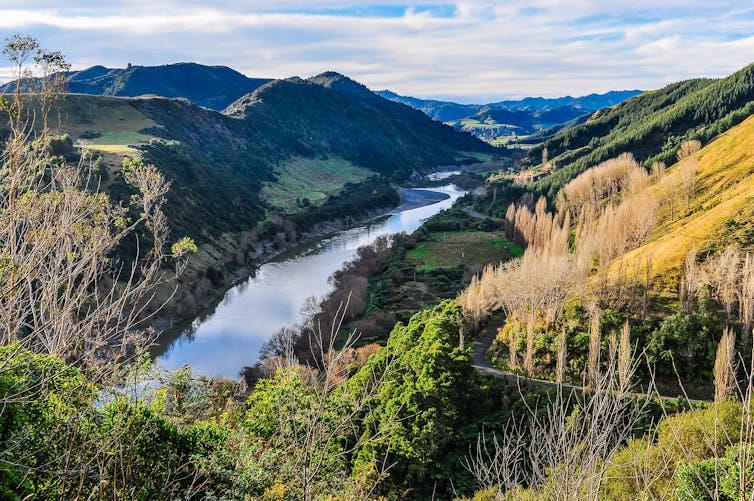Legal Rights for Nature: A Movement to Combat Biodiversity Loss
Written on
The Emergence of Nature’s Legal Personhood
The decline of biodiversity is accelerating at an alarming rate, unprecedented in human history. This trend indicates that our current methods of environmental management are insufficient. A novel idea gaining traction is the concept of granting legal rights to nature.
Indigenous communities have long recognized the inherent value of the natural world. In 1972, Christopher Stone, a law professor at the University of Southern California, introduced the notion of assigning legal rights to natural entities, advocating for a shift from a human-centered perspective to one that appreciates nature's intrinsic worth.
Ecuador became the first nation to incorporate rights of nature into its 2008 constitution, paving the way for numerous other countries to follow suit. Aotearoa New Zealand, for instance, has conferred legal personhood upon significant natural entities, including the Whanganui River and Te Urewera national park, with similar recognition anticipated for Taranaki maunga.
This rights-of-nature movement enables individuals to legally advocate for ecosystems, rather than merely for humans affected by environmental harm. This grants ecosystems their own agency, akin to other non-human entities recognized legally, such as charities and organizations.
Yet, can this movement effectively halt biodiversity loss? The answer is complex. Our recent research highlights that many instances of rights-of-nature have emerged in response to the inadequacies of existing frameworks to shield nature from relentless economic pressures.
The crux of effective rights-of-nature legislation lies in clearly defining liability and accountability.

Global Insights into Rights-of-Nature Frameworks
The structure of rights-of-nature frameworks varies significantly across different regions, legal contexts, and custodianship models. Our study analyzed 14 global cases of rights-of-nature, categorizing them based on their guardianship types.
For example, Ecuador's constitutional rights for nature were a response to years of pressure from mining industries, representing public guardianship where citizens can act on behalf of nature. Conversely, in New Zealand, Te Urewera was granted legal status with Tūhoe trustees designated as guardians.
A legal person is defined as an entity capable of entering contracts, incurring debts, and being accountable under the law. We classify rights-of-nature cases with designated guardians as “environmental legal personhoods.”
By examining these cases, we sought to understand their origins and designs. Who advocated for these rights? What activities were threatening these ecosystems? What are the liability implications for the guardians?
Our findings indicate that Indigenous peoples and local communities were often the driving forces behind these initiatives. For instance, the Whanganui River attained legal personhood in 2017 following centuries of Māori resistance to colonization and environmental degradation.
In contrast, the Mar Menor lagoon in Spain achieved legal recognition in 2022, largely due to local community efforts against pollution from agriculture and industry.
The evidence suggests a stark divide between local advocates and external economic interests. The rights-of-nature movement has emerged as a counteraction to ongoing economic pressures from urban, agricultural, and industrial activities. However, the design of these frameworks can differ greatly.
For example, Australia’s Victorian state government established the Victorian Environmental Water Holder as a legal entity to manage water resources, improving ecosystem health indirectly. In contrast, the Whanganui River's legal status allows it to act as its own entity with appointed guardians who have charitable status.
The Importance of Defining Liability
Recent legal challenges to rights-of-nature rulings underscore the critical nature of liability. In the US, a farming group contested the Lake Erie Bill of Rights in 2020, which granted the lake the right to “exist, flourish, and naturally evolve.” They argued the bill was too ambiguous and risked exposing them to liability from agricultural runoff.
Similarly, in India, the Ganges and Yamuna rivers were conferred living-person status, equating harm to these rivers with harm to humans. However, this decision faced challenges over custodianship clarity and liability for damages related to incidents in the rivers.
Both cases saw their rights overturned, indicating that clearly defining liability is crucial for the sustainability of the rights-of-nature movement aimed at biodiversity protection.
Our recommendation is that future rights-of-nature frameworks should incorporate well-defined legal rights, appoint guardians as separate legal entities with limited liability, and ensure participation from various interest groups.
Viktoria Kahui is a Senior Lecturer in Environmental Economics at the University of Otago. This research was conducted in collaboration with Claire Armstrong and Margrethe Aanesen in Norway.
Chapter 2: Perspectives on Nature's Legal Rights
This video discusses the concept of granting legal rights to nature, exploring the implications of recognizing ecosystems as legal entities.
This video showcases a growing global movement advocating for nature to receive the same legal rights as humans, highlighting key examples and challenges.